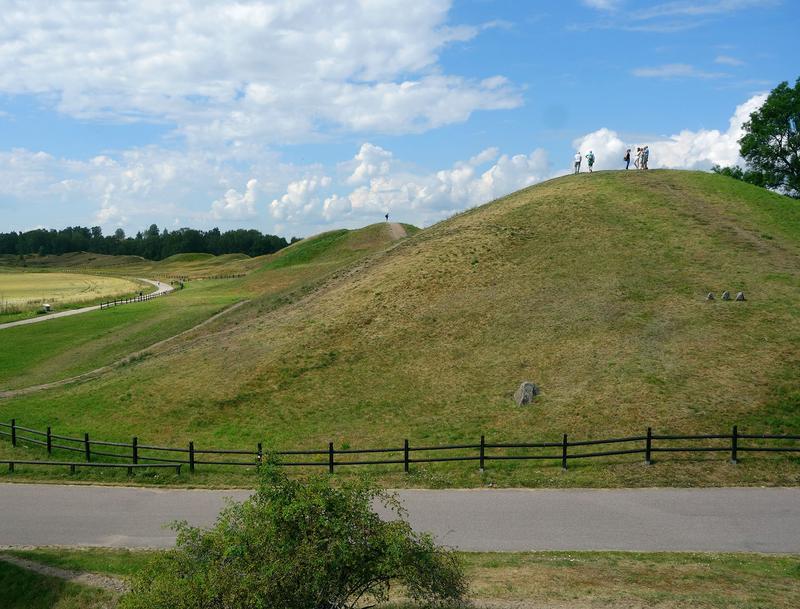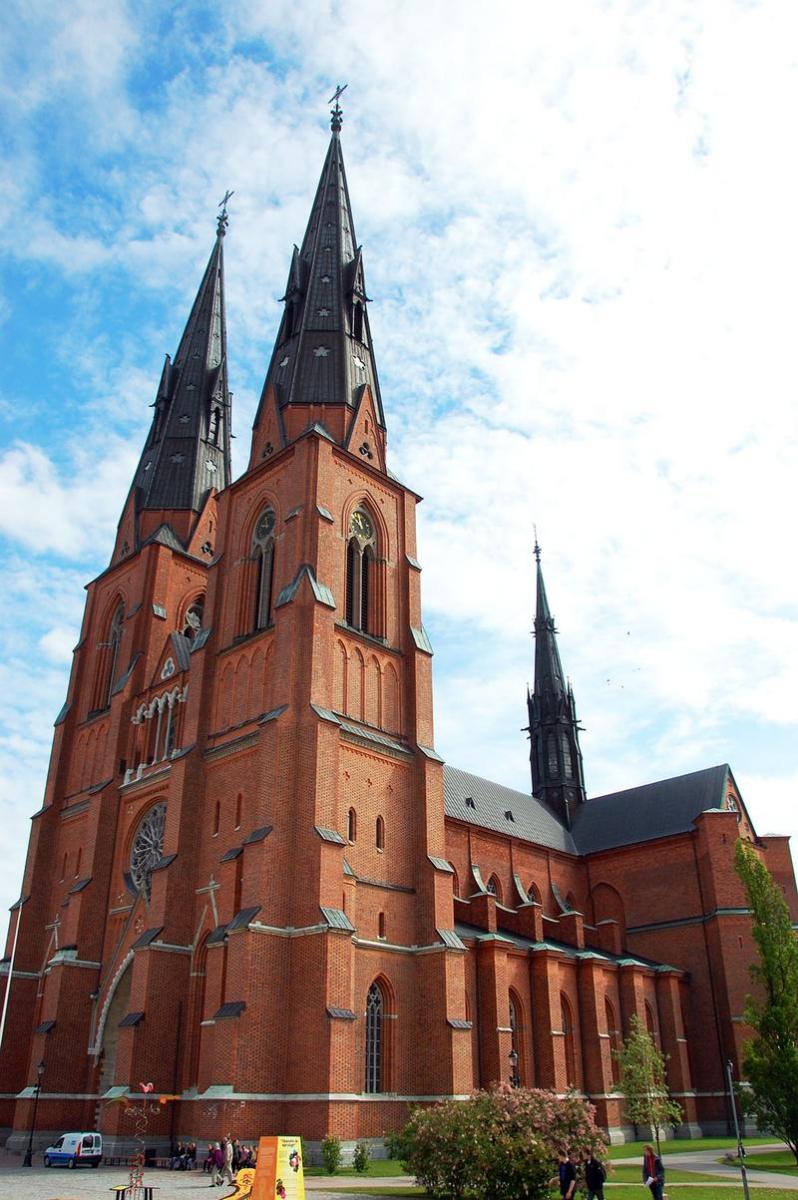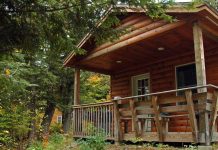April 30, 2015

Rick Steves, Tribune Content Agency, April 30, 2015
Uppsala, Sweden‘s fourth-largest city, is the best side-trip from Stockholm — just under an hour away by train. This happy town is Sweden’s answer to Oxford, offering stately university facilities and museums, the home and garden of botanist Carl Linnaeus, as well as a grand cathedral and the enigmatic burial mounds of Gamla Uppsala on the town’s outskirts.
Almost all the sights are in the compact city center, dominated by one of Scandinavia’s largest, most historic churches — Uppsala Cathedral. While the building was completed in 1435, the spires and interior decorations are from the late 19th century. The cathedral — with a fine Gothic interior, relics of St. Erik, memories of countless Swedish coronations, and the tomb of King Gustav Vasa — is well worth a visit.
Inside, you’ll find a different take on the Virgin Mary. This eerily lifelike statue from 2005, called “Mary (The Return),” captures Jesus‘ mother wearing a scarf and timeless garb. In keeping with the Protestant spirit, this version of Mary is shown not as an exalted queen, but as an everywoman, saddened by the loss of her child and seeking solace — or answers — in the church.
 This cathedral likely sees more tourists than worshipers. Before the year 2000, Sweden was a Lutheran state, with the Church of Sweden as its official religion. Until 1996, Swedes with one Lutheran parent automatically became members of the church at birth. Now you need to choose to join the church, and although the culture is nominally Lutheran, few people attend services regularly. While church is handy for Christmas, Easter, marriages, and burials, Swedes are more likely to find religion in nature, hiking in the vast forests or fishing in one of the thousands of lakes or rivers.
This cathedral likely sees more tourists than worshipers. Before the year 2000, Sweden was a Lutheran state, with the Church of Sweden as its official religion. Until 1996, Swedes with one Lutheran parent automatically became members of the church at birth. Now you need to choose to join the church, and although the culture is nominally Lutheran, few people attend services regularly. While church is handy for Christmas, Easter, marriages, and burials, Swedes are more likely to find religion in nature, hiking in the vast forests or fishing in one of the thousands of lakes or rivers.
Facing the cathedral is the university’s oldest surviving building, the Gustavianum, with a bulbous dome that doubles as a sundial. Today it houses a well-presented museum that features an anatomical theater, a cabinet filled with miniature curiosities, and Anders Celsius‘ thermometer. The collection is curiously engaging for the glimpse it gives into the mind-set of 17th-century Europe.
Uppsala was also home to the father of modern botany, Carl Linnaeus, whose house and garden — now a museum — provide a vivid look at this amazing scientist’s work. Linnaeus lived here from 1743 until 1778, while he was a professor at the University of Uppsala. Here he developed a way to classify the plant kingdom.
Strolling Sweden’s first botanical garden, I felt like a child: filled with wonder. Linnaeus ran this garden, living on-site to study plants — day and night, year round — tracking about 3,000 different species. Wandering the garden, you can pop into the orangery, built so temperate plants could survive the Nordic winters. The museum fills Linnaeus’ home (which he shared with his wife and seven children) with the family’s personal possessions and his professional gear. You’ll see his insect cabinet, herb collection, desk, botany tools, and notes.
Just outside of town stands Gamla (“Old”) Uppsala, a series of mounds where the nation of Sweden was born back in the Iron Age. This site gives historians goose bumps even on a sunny day. It includes nine large royal burial mounds circled by a walking path, all with English descriptions.
Fifteen hundred years ago, when the Baltic Sea was higher and it was easy to sail all the way to Uppsala, the pagan Swedish kings had their capital here. Old Uppsala is where the petty Swedish kingdoms came together and a nation coalesced. It was also here where Sweden became Christianized a thousand years ago.
The highlight of my Uppsala visit was climbing the burial mounds and imagining the scene over a thousand years ago, when the democratic tradition of this country helped bring the many small Swedish kingdoms together. Entire communities would gather at the rock that marked their place. Then the leader of all the clans, standing atop the flat mound, would address the crowd as if in a natural amphitheater, and issues of the day would be dealt with.
While no one gathers on these mounds for debates today, Sweden still honors its many traditions, and you’ll find some wild ones in Uppsala. Every April 30 (Walpurgis Eve — “Valborg” or “Sista April” in Swedish), students put on their black-rimmed white caps and run down a hill toward town while balloons are released and thousands of alumni, families, and friends cheer (the partying then goes on till dawn).
It’s this lively college vibe that gives Uppsala a fun-loving buzz — making a visit here one of your most memorable in Sweden. While it’s a small city, it comes with a big history and plenty to do. If you have five days in Stockholm and wonder what to do on that last day, go to Uppsala.
(Rick Steves (www.ricksteves.com) writes European travel guidebooks and hosts travel shows on public television and public radio. Email him at [email protected] and follow his blog on Facebook.)
This article was written by RICK STEVES and Tribune Content Agency from Rick Steves Travel – PBS and was legally licensed through the NewsCred publisher network.
![]() https://images1.newscred.com/cD1jMDY5MGZkNDEwNjM3N2E4YTlmZGUxZDNjODcxZGVhMSZnPWVkMzcyODlhZTgyNGZjN2Y0N2RlMGM0OTVlZDcyMDkw
https://images1.newscred.com/cD1jMDY5MGZkNDEwNjM3N2E4YTlmZGUxZDNjODcxZGVhMSZnPWVkMzcyODlhZTgyNGZjN2Y0N2RlMGM0OTVlZDcyMDkw
What do you think of this $type?










